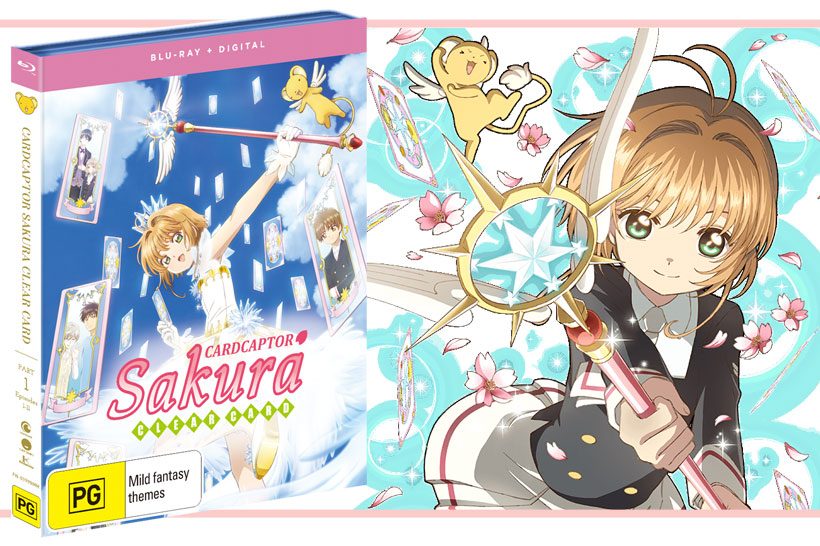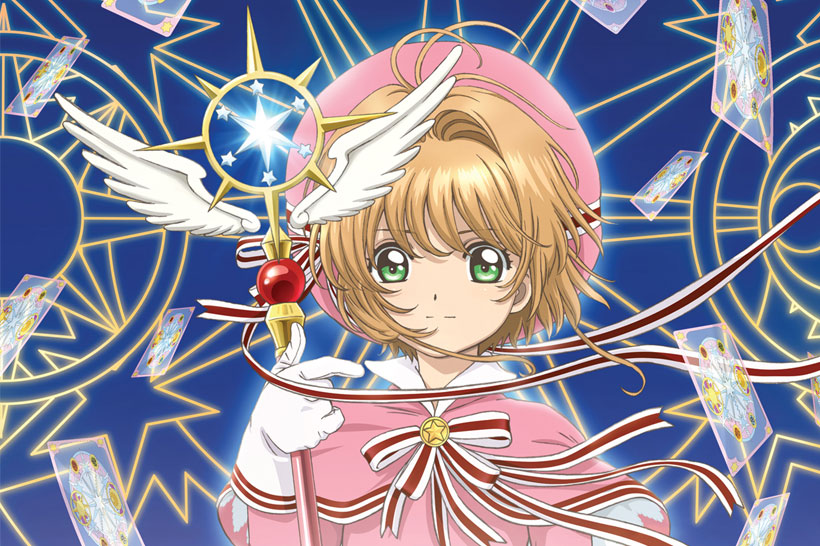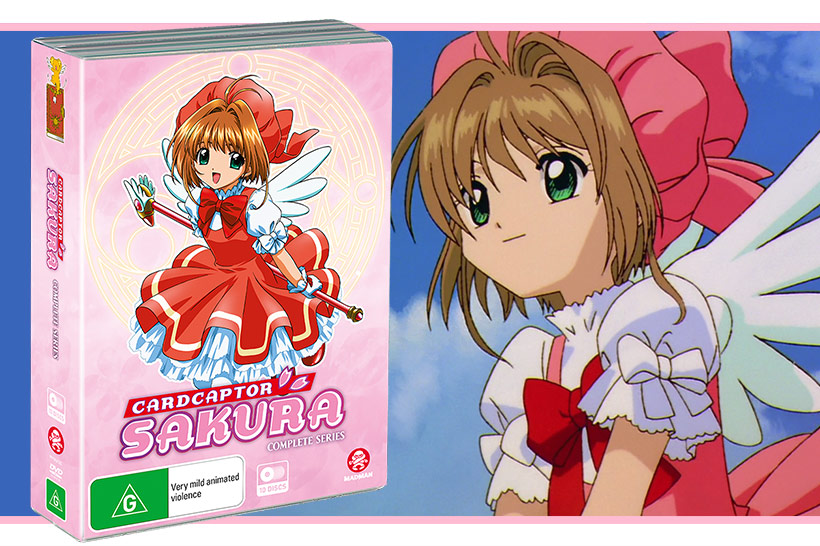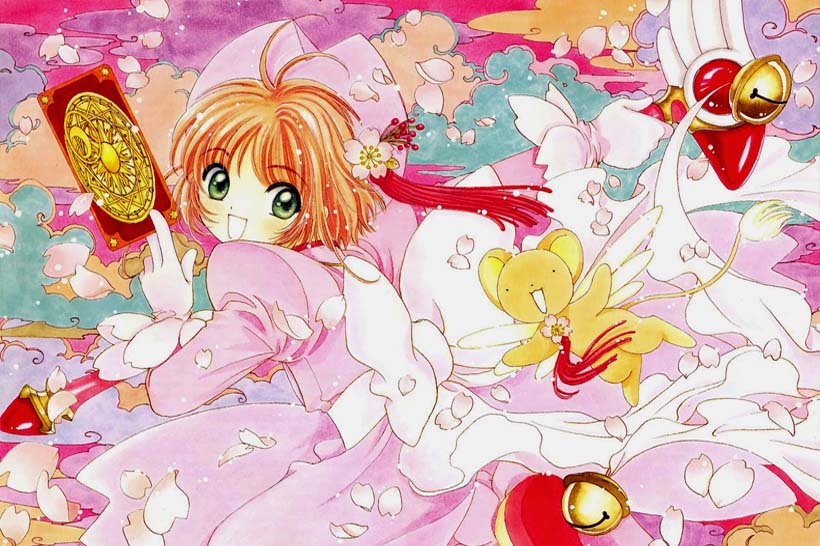In the real world it was 18 years between the last Cardcaptor Sakura animated feature and the new Clear Card series, but for those in the town of Tomoeda only two years have passed since Sakura did battle with the Nothing card, and with the Sakura cards safely sealed, Li back in Hong Kong and Eriol and company returning to England, Sakura, Tomoyo and their friends are starting their first year of middle school. Everything is pretty cruisy and not a lot has changed – Sakura and Toya are still bickering endlessly, Kero-chan is still obsessed with snacks and his own coolness and Tomoyo still lives to film Sakura at every opportunity. But things in a magical girl’s life can’t be that smooth, and when a strange hooded figure appears to Sakura in a dream surrounded by transparent cards she awakes to find her own cards have become clear and powerless, and some strange but similar magical disturbances are starting to befall Tomoeda once more.

When the same hooded figure appears again and Sakura wakes up with a new key that transforms into the powerful Staff of Dreams, a new round of card capturing begins as Sakura is attacked by The Gale, which she seals into a new kind of see-through card with a magical aura that nobody else can sense but her. Amidst these new revelations, Li returns from Hong Kong and he and Sakura can finally kick off their relationship, which mostly takes the form of adorable awkward blushing in each others presence, and a new exchange student, Akiho Shinomoto joins Sakura’s class and moves into Eriol’s old house along with her butler Yuna D. Kaito. You know stuff is about to get real when a exchange student arrives!
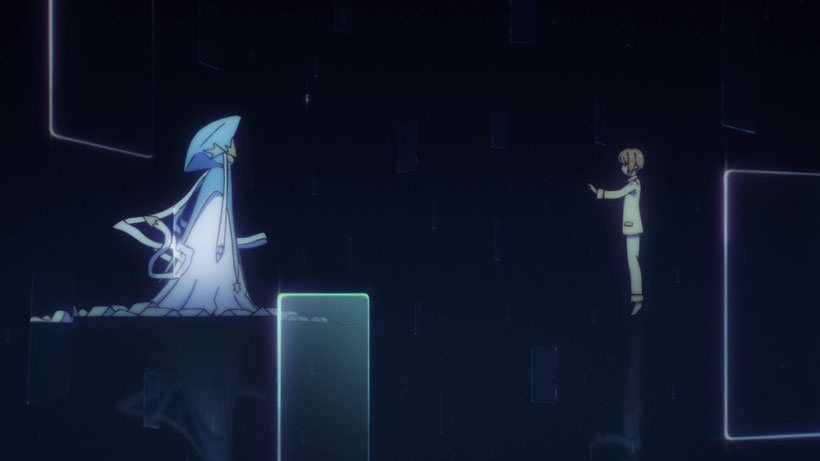
Cardcaptor Sakura: Clear Card brings the whole gang back together in more ways than one – as well as the whole cast of characters, the show also brings back all the original seiyuu to reprise their roles along with production studio Madhouse who originally produced the TV series and both movies. Hearing the voice cast back it’s like they never stopped playing the characters. Nobody but Sakura Tange could deliver that perfect “hoeeeee~“, and Aya Hisakawa’s Osaka-ben is still in fine form as Kero-chan.

Clear Card very quickly feels new and exciting but familiar and comfy at the same time, both doing new things with a fairly well worn formula and paying homage to elements of the original Cardcaptor Sakura story without leaning too hard on heavy-handed “Hey remember this?!” nostalgia-baiting. My enthusiasm for Cardcaptor Sakura is no secret, so watching Clear Card felt very much like having some old friends back. The first eleven episodes presented on this release tell just enough of the story to really get the hooks in – who is the mysterious hooded figure? Why did Sakura’s cards lose their power? Where did the Clear Cards come from? Why is Li suspicious of Akiho’s butler? And will Li ever get to try the rolled omelettes Sakura has been learning to cook?!

Madhouse have done an amazing job animating the new series, with fantastic character designs by Kunihiko Hamada and a softer, warmer colour palate that really delivers that very specific feeling of a CLAMP manga that, as great as it was, the visuals of the original series never quite nailed down. There are a few dodgy 3D additions, like passing cars and random background characters strolling around like stiff robots, but thankfully they’re few and far between. Clear Card also sees the welcome return of the Leave it to Kero-chan segments at the end of each episode, this time presented as Kero hosting a panel show, and the opening and ending themes, while not quite as catchy as the original’s Catch You Catch Me, are both great. The Blu-ray release also includes a prologue episode bridging the gap between the last movie and Clear Card, as Li prepares to return to Hong Kong and he and Sakura confess to each other and exchange stuffed bears.
This first volume left me very curious about how the rest of the series will play out, and some 20 years later perfectly recaptures the magic the Cardcaptor Sakura first brought to our screens in 1998.

